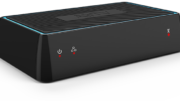To test out the ClearTV antenna, I used a homemade set of rabbit ears with a reflector similar to their “copper mesh.” I needed similar elements that can contract and extend to the same dimensions as the ClearTV mini can and also, if wanted, change the angle between the dipole elements.
To start, I calculated the lengths needed for the elements to create a dipole of the best dimensions:
ClearTV mini TECHNICAL DATA:
Frequency range:
VHF 174-230 MHz, dipole ~ 17.0” to 12.8” (1/4-λ length)
UHF 470-862(596) MHz , dipole ~ 6.28” to 4.95” (1/4-λ length)
Gain: 0~3dBi
Receiving Range: FM/VHF/UHF (FM is from 88-108 MHz dipole ~5’ 7” to 4’ 6.7”)
Impedance: 75 Ohms
In the ClearTV mini Technical Data, above two things are claimed:
-
Their antenna goes to 862 MHz, but by July of 2020, the FCC will have forced all TV stations to relocate if they are above old Channel 34 (590-596 MHz). (They are selling 600 MHz and above to cell phone companies for 5G usage.)
-
Their antenna’s frequency range is from 88 MHz to 862MHz. For best reception of the FM radio and VHF TV frequencies, the antenna would need to be able to extend from 1’0.8″ to 2’9.5″.
My best estimate of the ClearTV mini antenna is that the quarter-λ length is only from 1.9″ to 5.7″. While any length of antenna will pick up any frequency, it is best to have the dipole be half a wavelength (1/2-λ) of the frequency of interest. In the case of this antenna with a max length of 5.7″, the longest wavelength/frequency (λ/f) is 5.7″ X 4 = 0.579 m-λ ~518 MHz or ~ Channel 21 (Center f = 515 MHz, f range: 512-518 MHz). This means that we can expect it to decrease in being able to receive the VHF stations and be even worse for the FM radio stations. Since this antenna is longer than needed for the very high UHF station, it probably won’t be any better receiving them if we make the antenna shorter, but we can try.
Here’s how I estimated the lengths of this antenna and its box:
Since no dimension is knowable from the photo of the TV, no TV make, model, and base size was given. But, in all probability, the five RCA connectors on the back of the TV are spaced the same on all TV’s. The reason I considered this a good assumption is that RCA connectors are all the same size, and all manufacturers will want to space them as close together as possible without making it impossible to actually attach the cables to them. So the size of the RCA cable plug, plus a little space to avoid interference, is the limiting size for getting two of them connected to the RCA ports.
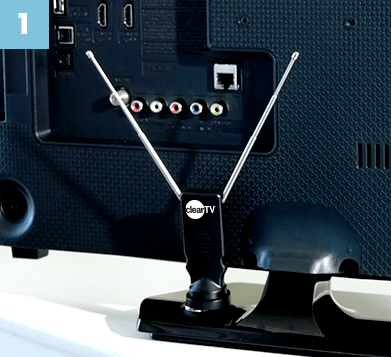
Five RCA Ports in the back of their TV
With the following image, I measured the five RCA connectors on the back of two of my TVs. They came out as: 6.6 cm and 6.5 cm (65mm). Going with the shorter of the two means we use the 65 mm or ~ 2.5″.
Now the photo of the TV also shows five RCA connectors; they measure 1.6 cm so the conversion factor will be 6.5/1.6 ~ 4.0.
Now measuring the minimum section of the antenna from the same photo: about 12 mm, so this is about 4.0 * 12 = 48 mm ~ 1.9″. Since I see only three sections, this means the longest length is about 144 mm or 5.7″. It is probably a bit shorter because if the antenna is shown at its maximum length it measures only 26 mm. Either way, there’s no way they can support a claim of being able to receive the VHF Hi frequencies of 174-216 MHz well, let alone the FM radio frequencies down to 88 MHz.
Note: The best length for a half-wave dipole is one-half of the wavelength of interest. This is absolutely true when transmitting but for receiving we do have a great deal of leeway.
In the area where I live, one of the strongest stations is on the Channel 46 frequencies. I did test the longest antenna length estimated for the ClearTV mini (144mm, 5.7″) and the shortest antenna length my antenna can manage (110mm -λ = 440mm or ~ 681MHz ~ Channel 49, Channel 46 center f = 665MHz or full wavelength of ~17.7″, quarter-λ of 4.44″ 113mm). The results showed that the longer antenna did better. Because of this, I only tested the antenna at my best estimate of the longest lengths of 5.7″ each or 11.4″ 1/2-λ (288 mm, each element length = 144 mm).
NOTE: Their claim that VHF frequencies are 174-230 MHz is incorrect. It is only 174-216 MHz for the VHF Hi frequencies. The frequencies from 216-225 MHz are used for Radar, and the 225-300 frequencies are used by our federal government.
So, for TV we need as short as 6.9″ and as long as 2′ 10.7″. These are dipole lengths, which means each extendable dipole section needs to be half of that, or 3.45″ to 1′ 5.35″
Each extendable section I have is as short as 8.75″ and can extend to 1′ 10″.
If we estimate the Clear TV section length, we get the shortest length as about 4″. But since a quick test showed a longer antenna is better at picking up even the higher frequencies, I only tested with my best estimate of the longest antenna length of the ClearTV mini antenna, or 288 mm for the dipole length.
As my quick test showed, it was better to have an antenna that is too long rather than one that is too short. So, if I were to select one length for the TV antenna, it would be the longest length for the lowest frequency. This turns out to be channel 7 at 177 MHz (its center frequency). To find the antenna length needed to receive channel 7, we can use the wavelength calculator on my web site. For channel 7, 177 MHz (the quarter wavelength) comes out to be about 16.7″ (0.424 m). That’s a dipole of 1′ 4.7″. The ClearTV mini doesn’t even come close to this.
The ClearTV mini antenna looks like it has three sections, which only gives us about 5.7″ and probably less, because each extendable section is always a little shorter than the one it is pushed into.

ClearTV Three Section Antenna
My antenna test setup for the dipole:

Front of the dipole
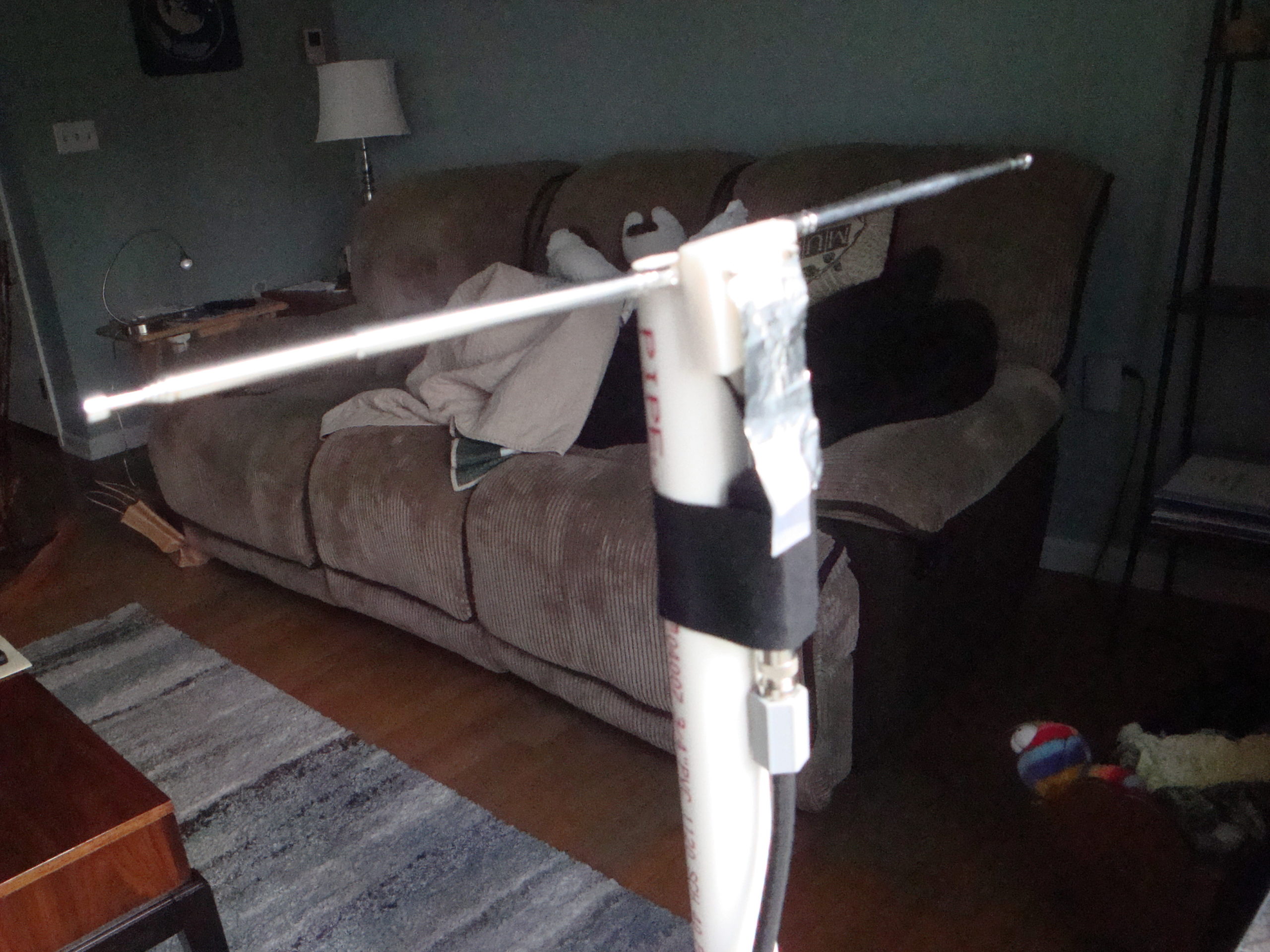
Front of the dipole with a reflector (magic copper grid)
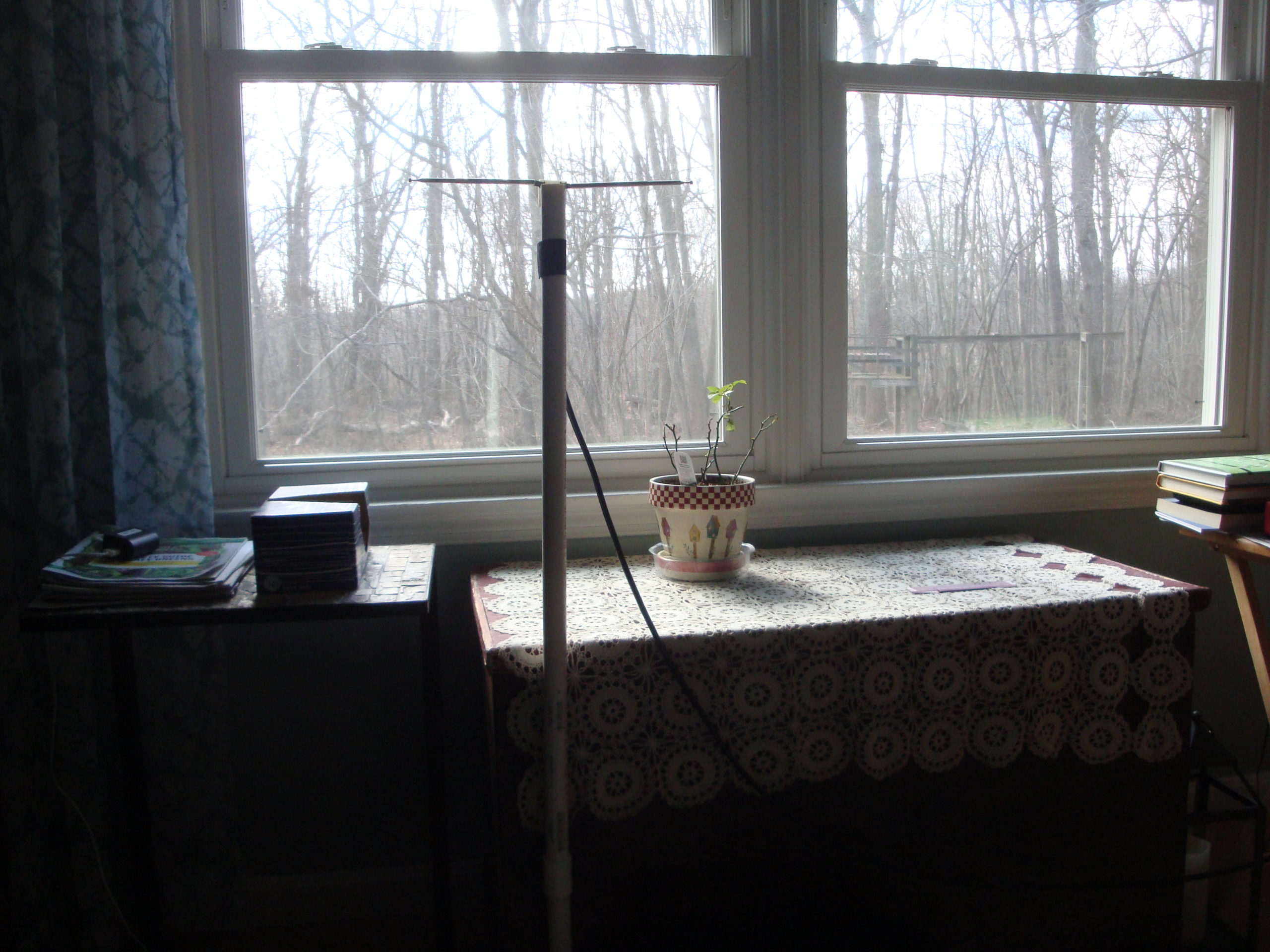
Back of dipole
Then the Bow Tie antenna:

Front of the bow tie
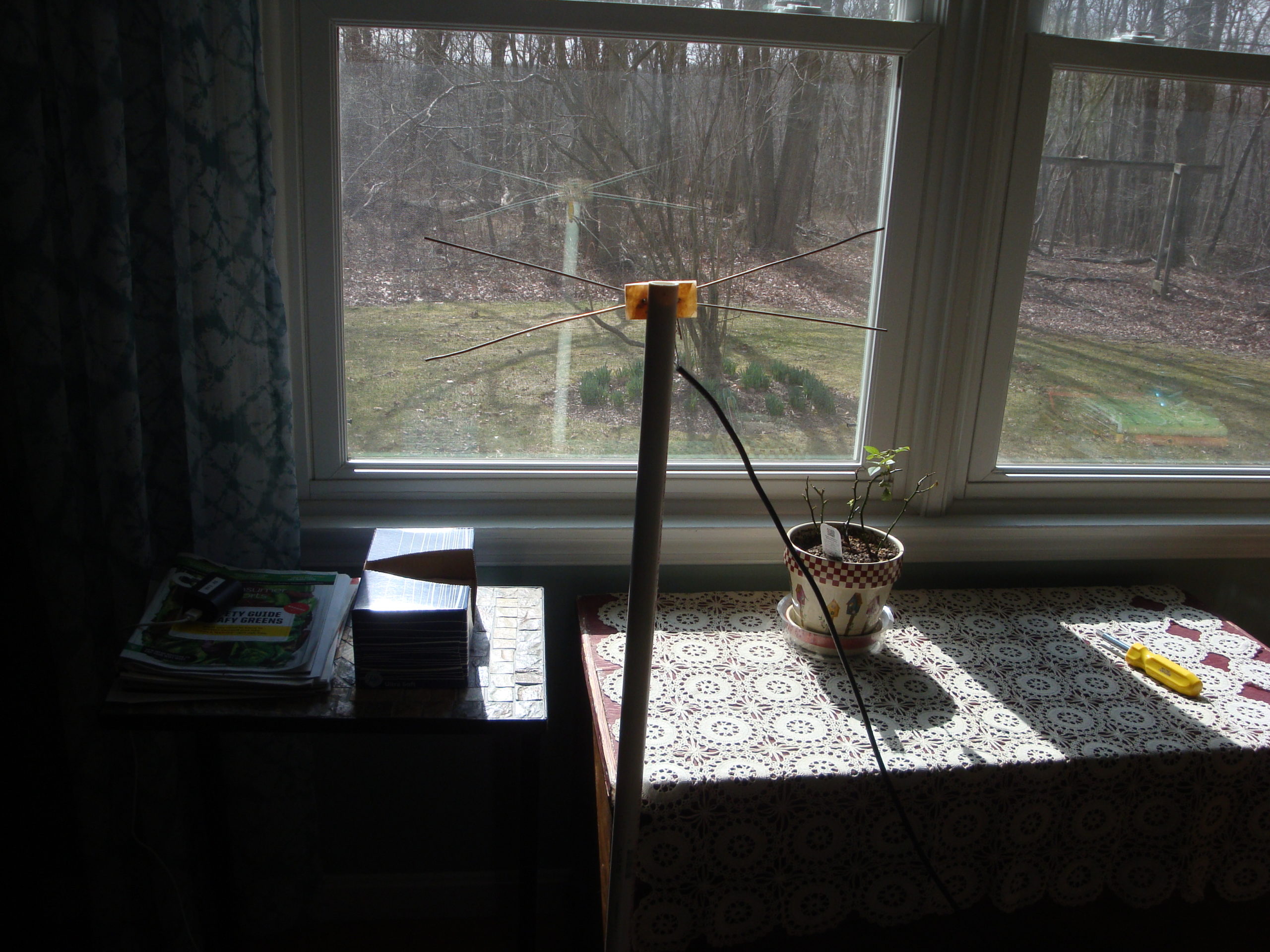
Back of the bow tie
All tests were done with this length. For the dipole I tested no grid, short grid, long grid, and no grid again. Then I tested the bow tie antenna, and last the shorter length of my antenna, or about 220 mm for the full dipole. The data is below:
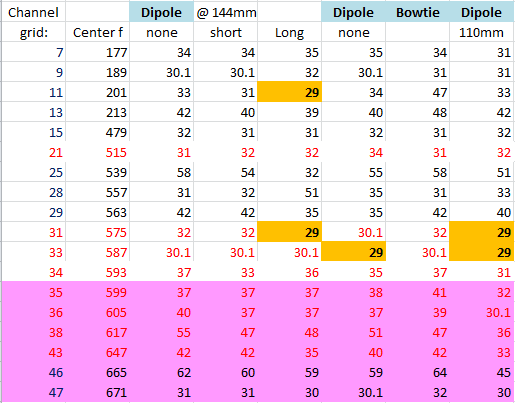
Data set 1

Data Guide
The conclusion is just about what I expected: there’s no real difference between the dipole and bow tie antennas, and the “Magic Copper Mesh” also doesn’t seem to make a noticeable difference in the basic dipole reception.
A little surprising was that the longer the antenna, the better it was at even receiving the shorter wavelength TV stations. The shortest dipole length my antenna could manage was 110 mm for each half of the dipole for a dipole length of 220 mm. This works out to a frequency of about 681 MHz and this is best for channels 48 and 49. This is a little shorter than our strongest station Channel 46 at 662-668 MHz and the best dipole length for this TV station would be about 226 mm, 1/2-λ. Just being 6mm shorter than the length for this station reduced the reception by about 15 dB.
I plan to test dipole lengths that are shorter, best calculated, and longer for a dipole antenna in my next blog article, so stay tuned!
Until next time, happy OTA TV watching!
All my blog articles are listed at: Karras’ Corner
https://blog.solidsignal.com/author/philk/
or
Karras’ Corner Article Links
http://cs.yrex.com/ke3fl/KarrasCorner.htm
on my KE3FL web site.




